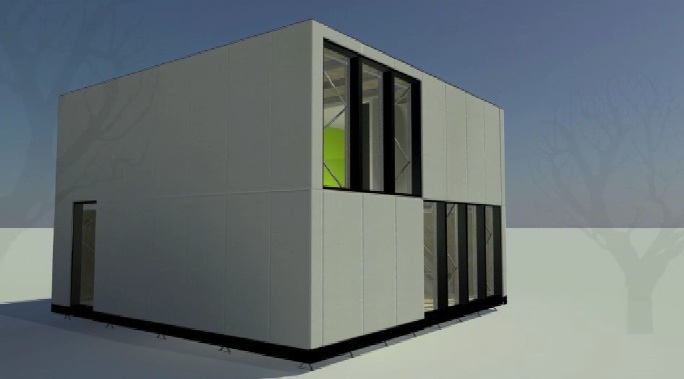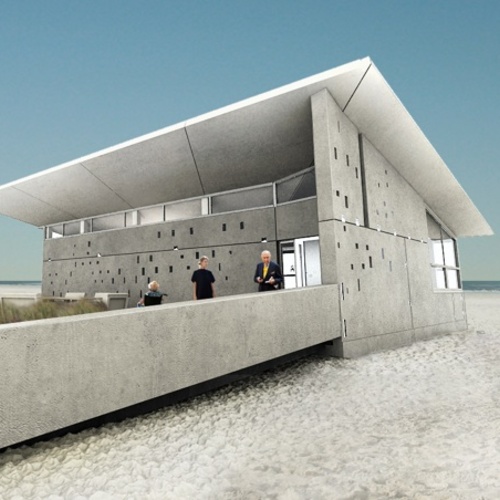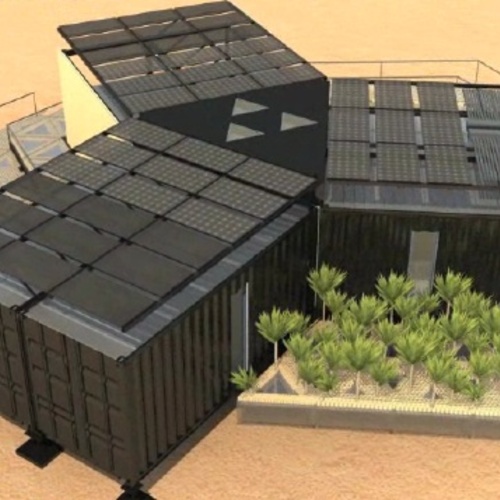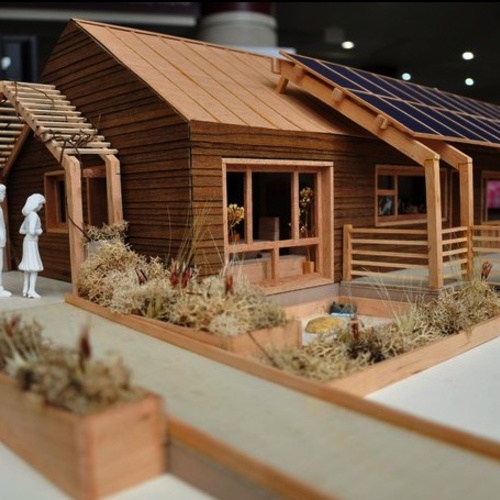
Image Credit: Ghent University / Team Belgium (all images)
Image Credit: Ghent University / Team Belgium (all images) E-Cube’s SIP floor sections are slid into place on top of the home’s steel-frame foundation. E-Cube’s steel-frame foundation sits on adjustable jacks. The E-Cube skeleton is an all-steel bolt-together pallet rack system that will be completely enclosed by SIPs and windows. A still from Team Belgium’s video representation of window and SIP installations for E-Cube. SIPs are used not only for the floor but also for the exterior walls and roof. The exterior walls will be clad in Eter-Color fiber cement panels, which are visible to the left of the doorway. E-Cube's main room. One of two bedrooms in the two-story house. The SIPs on the rooftop will be coated with EPDM roofing.
Many Solar Decathlon designs are elaborations on the cube, in part because houses conforming to that shape tend to be relatively simple to dissemble, transport, and reassemble. Team Belgium, representing Ghent University, saw the cube as a starting point — but also as a destination — for its Solar Decathlon 2011 entry.
Simplicity is a watchword for Team Belguim’s project, E-Cube, which is in fact designed to be a build-it-yourself starter home that, as its occupants’ needs change, can be enhanced relatively easily with an addition or reconfiguration, upgraded finishes, or a bigger photovoltaic system. The two-story, two-bedroom home’s metal skeleton — along with windows, floor, wall, and roof components engineered and factory-made to fit together in predictable tile-like patterns — is designed to be shipped and assembled efficiently by the owner.
Another goal for E-Cube’s creators is to make the house affordable. Project manager Michael Arens tells GBA that “currently we are aiming at $200,000 to $250,000. We’re trying to be the most affordable house of them all.”
Celebrating right angles and an open interior
E-Cube rests on a steel frame leveled by a system of adjustable foundation jacks. Once the frame is placed on site and adjusted to level, structural insulated panels — rigid polyurethane sandwiched between two MDF plates — are slid into place to create the floor of the house. An all-steel pallet-rack skeleton is then bolted together and anchored to the floor plates, defining the building’s cube shape.
Follow Team Belgium
if (WIDGETBOX) WIDGETBOX.renderWidget(’69e8aecc-fd2e-4bbd-bb70-6bd97f749cab’); Get the Ghent University Solar Decathlon 2011 – widget and many other great free widgets at Widgetbox! Not seeing a widget? (More info)
SIPs and Saint-Gobain triple-glazed windows are secured to the frame in a uniform-tile pattern, creating both the exterior walls and the roof and, to reduce thermal bridging, fully enclosing the steel frame. The SIPs on the exterior walls will be clad in Eter-Color fiber-cement panels, and the roof will be sealed with a layer of EPDM (ethylene propylene diene monomer, or M-class) rubber. The home’s all-electric mechanical systems will be powered by photovoltaic modules mounted at very slight angles over almost the entire roof surface.
Arens says the E-Cube interior – with a large open area crisscrossed by skeleton braces and bordered by steel-grate walkways on the second floor – is 1,000 sq. ft., the competition maximum.
The team has no definite plans for the house once Solar Decathlon 2011 is over. “We haven’t decided yet,” Arens says. “All options are still open for now.”
For an overview of the Solar Decathlon teams, see GBA’s 2011 Solar Decathlon Resource Guide
Weekly Newsletter
Get building science and energy efficiency advice, plus special offers, in your inbox.















0 Comments
Log in or create an account to post a comment.
Sign up Log in